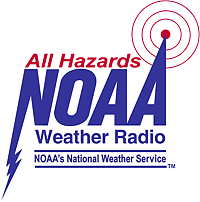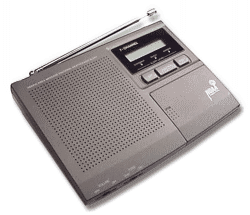NOAA Weather Radio All-Hazards

The most important weather safety rule of all is to know when you are at risk from a hazardous weather. Your best source for this information is the National Weather Service whose mission is to issue official weather watches, warnings, and advisories.
For over 130 years the National Weather Service, have been serving and protecting the nations citizens by monitoring the weather and providing alerts to any dangers.
How does one get this information? The most reliable method is via the NOAA Weather Radio broadcasts. NOAA Weather Radio (NWR) is a nationwide network of radio stations broadcasting continuous weather information direct from your local National Weather Service office.
NWR broadcasts National Weather Service warnings, watches, forecasts and other hazard and local information 24 hours a day. The information broadcast on the NWR is tailored for your area.
Working with the Federal Communication Commission's (FCC) Emergency Alert System, NWR is an "all hazards" radio network, making it your single source for comprehensive weather and emergency information.

NWR also broadcasts warning and post-event information for all types of hazards, not just tropical cyclones, such as earthquakes and volcano activity, and environmental such as chemical releases or oil spills.
NWR broadcasts from numerous transmitters, covering all 50 states, adjacent coastal waters, Puerto Rico, the U.S. Virgin Islands, and the U.S. Pacific Territories. When a hazardous weather watch or warning is needed, an alert with a tone will automatically activate most receivers. The newest receivers have the ability to be set for just your county or any group of surrounding counties.

NWR receivers can be purchased at many electronic retail stores, electronic departments within department stores, and some drug stores. NWR's can also be purchased through some mail order catalogs. They are often sold in boat and marine accessory businesses. Prices vary from $20 to $200, depending on the model. The tone alarm feature will be found on models generally from $35 and up.


